Preprints
(2025) Macrophage phagocytosis of Coccidioides promotes its differentiation into the parasitic form. biorxiv2025.10.05.680493v1 doi: https://doi.org/10.1101/2025.10.05.680493
(2025) An unusual genetic switch controls Mycobacterium avium pathogenesis, antibiotic resistance and colony morphology. biorxiv2025.07.28.667291v1 doi: https://doi.org/10.1101/2025.07.28.667291 PMID:40766380
(2025) The Rpd3 histone deacetylase is critical for temperature-mediated morphogenesis and virulence in the human fungal pathogen Histoplasma biorxiv2025.08.01.668069v1 doi: https://doi.org/10.1101/2025.08.01.668069
(2025) Rapid gain and loss of a chromosome drives key morphology and virulence phenotypes in Histoplasma, a fungal pathogen of humans. biorxiv2025.05.23.655702v1 doi: https://doi.org/10.1101/2025.05.23.655702
(2025) Genome dynamics and chromosome structural variations in Histoplasma ohiense, a fungal pathogen of humans. biorxiv2025.05.05.652209v1 doi: https://doi.org/10.1101/2025.05.05.652209
(2021) The ESX-1 secretion system senses bacterial contact and prepares mycobacteria for environmental adaptation. bioRxiv 2021.10.17.464699v1 doi: https://doi.org/10.1101/2021.10.17.464699 GSE185010
Published

(2025) Expansion of secreted cystine knot proteins reveals virulence factors in the human fungal pathogen Histoplasma. Cell reports 44:116465 PMID:41138184 PRJNA1199544 source code: KNOTTIN_FINDER KNOTTIN_TOPOLOGY_SCAN

(2025) Chemical stimuli override a temperature-dependent morphological program by reprogramming the transcriptome of a fungal pathogen. mBio 10:e0223425 PMID:40928299 PRJNA1283523 GSE218032

(2025) "Select and Resequence" methods enable a genome wide association study of the dimorphic human fungal pathogen Coccidioides posadasii. Genome biology and evolution 17:(7):evaf135 PMID:40611625 PRJNA1143091 PRJNA1143168

(2025) Transcriptomic atlas throughout Coccidioides development reveals key phase-enriched transcripts of this important fungal pathogen. PLoS Biology 23:(4):e3003066 PMID:40233121 PRJNA1173190 GSE279406 GSE279421
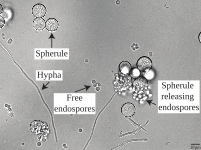
(2025) Optimizing in vitro spherulation cues in the fungal pathogen Coccidioides. mSphere e0067924 PMID:39688406 GSE269000
(2024) Immediate myeloid depot for SARS-CoV-2 in the human lung. Science advances 10:(31):eadm8836 PMID:39083602
(2024) NF-κB inhibitor alpha controls SARS-CoV-2 infection in ACE2-overexpressing human airway organoids. Scientific reports 14:(1):15351 PMID:38961189
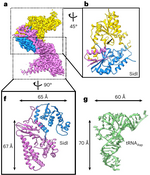
(2023) A Legionella toxin exhibits tRNA mimicry and glycosyl transferase activity to target the translation machinery and trigger a ribotoxic stress response. Nature cell biology PMID:37857833 GSE205648 8JHU EMD-36294 PXD034240
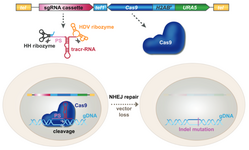
(2023) Recyclable CRISPR/Cas9-mediated gene disruption and deletions in Histoplasma. mSphere 8:(6):e0037023 PMID:37819140 PRJNA971667
(2023) SARS-CoV-2 infection of Airway Organoids Reveals Conserved Use of Tetraspanin-8 by Ancestral-, Delta-, and Omicron- Variants Stem cell reports PMID:36827975
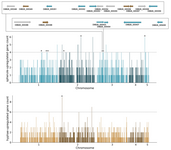
(2022) Genome Organization and Copy-Number Variation Reveal Clues to Virulence Evolution in Coccidioides posadasii Journal of Fungi 8:(12):1235 PMID:36547568 source code
(2022) The future of fungi: threats and opportunities. G3 (Bethesda, Md.) 12:(11):jkac224 PMID:36179219
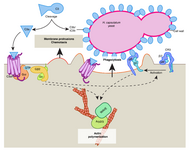
(2022) Genome-scale CRISPR screening reveals that C3aR signaling is critical for rapid capture of fungi by macrophages. PLoS Pathogens 18:(9):e1010237 PMID:36174103
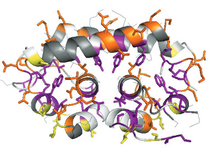
(2022) Cbp1, a rapidly evolving fungal virulence factor, forms an effector complex that drives macrophage lysis. PLoS Pathogens 18:(6):e1010417 PMID:35731824 7R6U 7R79

(2022) COVID-19-Associated Lung Microvascular Endotheliopathy: A "From the Bench" Perspective. American journal of respiratory and critical care medicine PMID:35649173
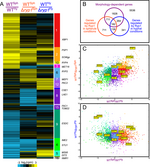
(2022) The WOPR family protein Ryp1 is a key regulator of gene expression, development, and virulence in the thermally dimorphic fungal pathogen Coccidioides posadasii. PLoS Pathogens 18:(4):e1009832 PMID:35385558 GSE178277
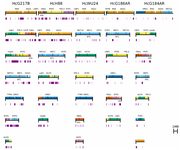
(2022) Chromosome-Level Genome Assembly of a Human Fungal Pathogen Reveals Synteny among Geographically Distinct Species. mBio 13:e02574-21 PMID:35089059 PRJNA682643, PRJNA682644, PRJNA682645, PRJNA682647, PRJNA682647.
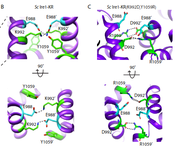
(2021) Protomer alignment modulates specificity of RNA substrate recognition by Ire1. eLife 10:e67425 PMID:33904404
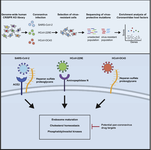
(2020) Genetic Screens Identify Host Factors for SARS-CoV-2 and Common Cold Coronaviruses. Cell 184:(1):106-119 PMID:33333024
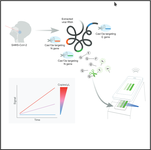
(2020) Amplification-free detection of SARS-CoV-2 with CRISPR-Cas13a and mobile phone microscopy. Cell 184:(2):323-333 PMID:33306959
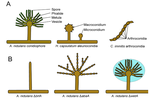
(2020) Recurrent loss of abaA, a master regulator of asexual development in filamentous fungi, correlates with changes in genomic and morphological traits. Genome biology and evolution 12:71119-1130 PMID:32442273
(2019) Molecular regulation of Histoplasma dimorphism. Current opinion in microbiology 52:151-157 PMID:31739263
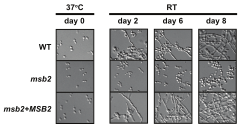
(2019) Opposing signaling pathways regulate morphology in response to temperature in the fungal pathogen Histoplasma capsulatum. PLoS Biology 17:(9):e3000168 PMID:31568523 GEO:GSE124292 PRJNA514096
Retracted (PMID:36944162)
After this article was published, we conducted further genotypic and phenotypic analyses that revealed that the morphological phenotype studied in the article was not due to an Msb2 mutation but rather to an unlinked chromosome alteration. The nature of the chromosomal alteration is still under investigation. Given this new information, our statements attributing outcomes to Msb2 or an msb2 mutation are not supported, nor are the article’s main conclusions about Msb2 functions and temperature-dependent antagonism between the Ryp and Msb2 pathways.
In addition, we have been unable to reproduce the finding that STU1 gene is partially required for hyphae formation at room temperature. We hypothesize that the phenotype may have been due to the variable nature of the filamentation assay.
In light of these issues, we retract this article.
All authors agreed with the retraction. We apologize that these issues were not identified before the article was published.
We are currently characterizing the chromosomal alteration with the intent of submitting a corrected version of this article.
(2019) Sensing the heat and the host: Virulence determinants of Histoplasma capsulatum. Virulence 10:(1):793 PMID:31560240
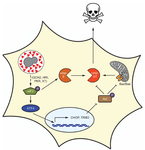
(2017) The transcription factor CHOP, an effector of the integrated stress response, is required for host sensitivity to the fungal intracellular pathogen Histoplasma capsulatum. PLoS Pathogens 13:(9):e1006589 PMID:28953979
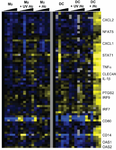
(2016) CD103+ Conventional Dendritic Cells Are Critical for TLR7/9-Dependent Host Defense against Histoplasma capsulatum, an Endemic Fungal Pathogen of Humans. PLoS Pathogens 12:(7):e1005749 PMID:27459510 GEO:GSE70505
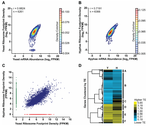
(2015) Genome-Wide Reprogramming of Transcript Architecture by Temperature Specifies the Developmental States of the Human Pathogen Histoplasma. PLoS genetics 11:(7):e1005395 PMID:26177267 GEO:GSE68707
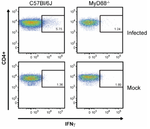
(2015) MyD88-dependent signaling drives host survival and early cytokine production during Histoplasma capsulatum infection. Infection and immunity 83:(4):1265-75 PMID:25583527
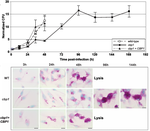
(2015) Macrophage cell death and transcriptional response are actively triggered by the fungal virulence factor Cbp1 during H. capsulatum infection. Molecular microbiology 98:(5):910-929 PMID:26288377 GEO:GSE23378
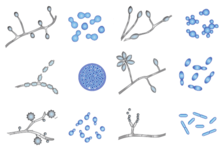
(2014) Thermally Dimorphic Human Fungal Pathogens--Polyphyletic Pathogens with a Convergent Pathogenicity Trait. Cold Spring Harbor perspectives in medicine 5:(8):a019794 PMID:25384771
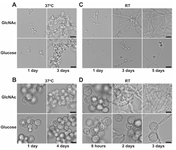
(2013) N-acetylglucosamine (GlcNAc) triggers a rapid, temperature-responsive morphogenetic program in thermally dimorphic fungi. PLoS genetics 9:(9):e1003799 PMID:24068964 GEO:GSE48044
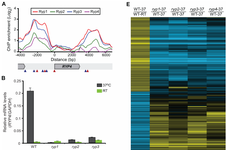
(2013) A temperature-responsive network links cell shape and virulence traits in a primary fungal pathogen. PLoS biology 11:(7):e1001614 PMID:23935449 GEO:GSE47832
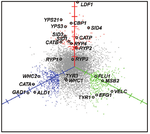
(2013) Comparative transcriptomics of infectious spores from the fungal pathogen Histoplasma capsulatum reveals a core set of transcripts that specify infectious and pathogenic states. Eukaryotic cell 12:(6):828-52 PMID:23563482 GEO:GSE45432
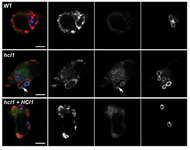
(2013) The 3-hydroxy-methylglutaryl coenzyme A lyase HCL1 is required for macrophage colonization by human fungal pathogen Histoplasma capsulatum. Infection and immunity 81:(2):411-20 PMID:23184522
(2012) Mouse models for the study of fungal pneumonia: a collection of detailed experimental protocols for the study of Coccidioides, Cryptococcus, Fusarium, Histoplasma and combined infection due to Aspergillus-Rhizopus. Virulence 3(3):329-38 PMID:22546902
(2012) A conserved transcriptional regulator governs fungal morphology in widely diverged species. Genetics 190:(2):511-21 PMID:22095082 GEO:GSE32558
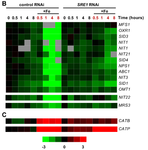
(2012) SRE1 regulates iron-dependent and -independent pathways in the fungal pathogen Histoplasma capsulatum. Eukaryotic cell 11:(1):16-25 PMID:22117028 GEO:GSE33792
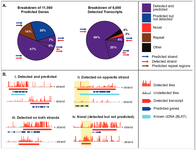
(2011) Experimental annotation of the human pathogen Histoplasma capsulatum transcribed regions using high-resolution tiling arrays. BMC microbiology 11:216 PMID:21958208 GEO:GSE31155
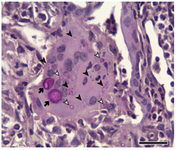
(2010) Conidia but not yeast cells of the fungal pathogen Histoplasma capsulatum trigger a type I interferon innate immune response in murine macrophages. Infection and immunity 78:(9):3871-82 PMID:20605974 GEO:GSE20022
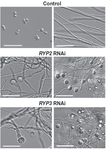
(2008) Conserved factors Ryp2 and Ryp3 control cell morphology and infectious spore formation in the fungal pathogen Histoplasma capsulatum. Proceedings of the National Academy of Sciences of the United States of America 105:(38):14573-8 PMID:18791067
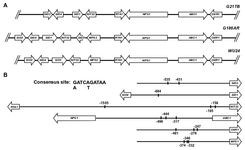
(2008) Histoplasma requires SID1, a member of an iron-regulated siderophore gene cluster, for host colonization. PLoS Pathogens 4:(4):e1000044 PMID:18404210
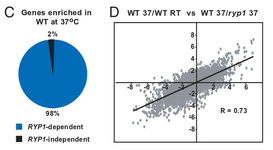
(2008) Temperature-induced switch to the pathogenic yeast form of Histoplasma capsulatum requires Ryp1, a conserved transcriptional regulator. Proceedings of the National Academy of Sciences of the United States of America 105:(12):4880-5 PMID:18339808
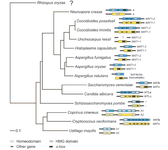
(2007) Evolution of the mating-type locus: insights gained from the dimorphic primary fungal pathogens Histoplasma capsulatum, Coccidioides immitis and Coccidioides posadasii. Eukaryotic Cell 6(4):622-9 PMID:17337636
(2006) Using Genomics to Study the Life Cycle of Histoplasma capsulatum. In "The Mycota, Vol. XII. Editor: Alistair Brown. Publisher: Springer Verlag.
(2006) The future of functional genomics in Histoplasma capsulatum. In "Molecular Principles of Fungal Pathogenesis." Editors: Joseph Heitman, Scott Filler, John Edwards, Aaron Mitchell. Publisher: ASM Press.
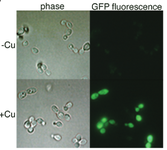
(2006) Identification of a copper-inducible promoter for use in ectopic expression in the fungal pathogen Histoplasma capsulatum. Eukaryotic cell 5:(6):935-44 PMID:16757741
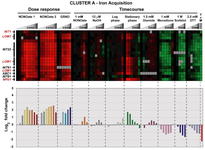
(2005) Identification of Histoplasma capsulatum transcripts induced in response to reactive nitrogen species. Molecular biology of the cell 16:(10):4792-813 PMID:16030248 (Histobase annotations)
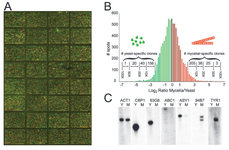
(2003) Identifying Phase-Specific Genes in the Fungal Pathogen Histoplasma capsulatum Using a Genomic Shotgun Microarray. Molecular Biology of the Cell 14(6):2314-2326 PMID:12808032 (Histobase annotations)
(2001) The protein kinase Pho85 is required for asymmetric accumulation of the Ash1 Protein in Saccharomyces cerevisiae. Mol. Microbiol. 42(2):345-53 *These two authors contributed equally to this work.11703659
(1997) Actin-dependent localization of an RNA encoding a cell-fate determinant in yeast. Nature 389:(6646):90-3 PMID:9288973
(1996) Identification of asymmetrically localized determinant, Ash1p, required for lineage-specific transcription of the yeast HO gene. Cell 84:(5):711-22 PMID:8625409
(1995) Amino acid substitutions in the structured domains of histones H3 and H4 partially relieve the requirement of the yeast SWI/SNF complex for transcription. Genes & development 9:(22):2770-9 PMID:7590252
(1992) Integration of Multiple Regulatory Inputs in the Control of HO Expression in Yeast. In "Transcriptional Regulation," S.L. McKnight and K.R. Yamamoto, eds., Cold Spring Harbor Laboratory Press, Cold Spring Harbor, New York, pp. 949-974.
(1992) Retroviral integration into minichromosomes in vitro. The EMBO journal 11:(1):291-303 PMID:1310932